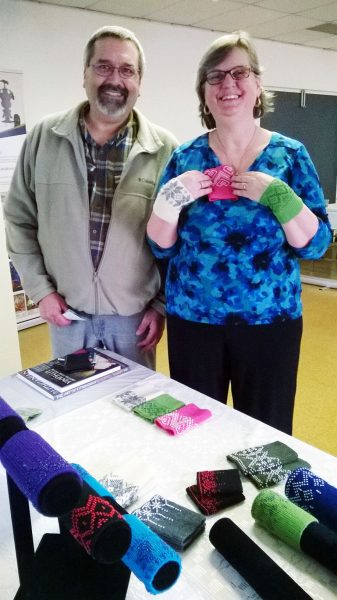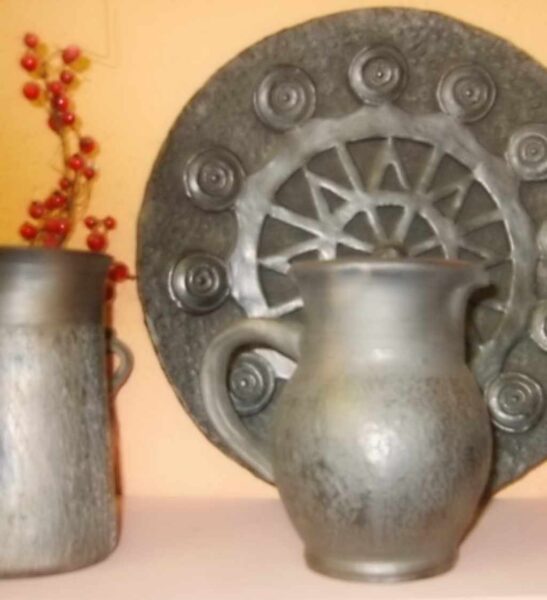

Gintaras
“Gintaras”, or Amber, has been important to Lithuanians and Baltic people for millennia.
Important in terms of culture, art and symbolism. Gintaras (Lithuanian for amber) comes from “ginte” (meaning to protect). Lithuanians and people of the Baltics have a special place in their hearts for this beautiful “golden stone” and cherish its legacy and place in our lives.
According to legend, long, long ago a fisherman named Kastytis cast his nets in the Baltic Sea. Jūratė sent her mermaids to warn Kastytis that he should not disturb the waters and scare her fish, but he did not obey and continued fishing. Jūratė wanted to see who dared to disobey her and came to the surface of the water. When she saw Kastytis, she was won over by his beauty, courage and delightful songs. It was love at first sight for the couple. Kastytis followed Jūratė into the water and stayed in the amber palace with her at the bottom of the sea. When the god Perkūnas became aware of Jūratė’s love for a mortal, he hit the amber palace with a bolt of lightning. The palace was destroyed, Kastytis was killed and Jūratė was chained to the ruins for punishment. Even today the water throws ashore the remains of the amber palace and small pieces of amber – Jūratė’s Tears.
Amber is fossilized tree resin that formed when it dropped to the forest floor, often getting washed into rivers then down to deltas in coastal regions where they were buried in sediment. The resin was fossilized by pressures and temperatures produced by the overlying sediment. To become amber, the resin had to be resistant to natural decay and remain buried relatively undisturbed for millions of years. One of the wonderful things about gintaras is the fact that it can, on occasion, include air bubbles, or bits of plant, insect or animal material. These are called inclusions. Amber with inclusions are preserved fossil records that can tell us a lot about life that existed millions of years ago. Insects are the most common and can sometimes be found as intact specimens.
The largest deposits in the world are found in the Baltics, largely around present day Lithuania, accounting for 80% of the amber ever collected. Historically the Lithuanian coastal towns of Palanga and Klaipeda were the main sources of Baltic amber. If you’re lucky, especially after a storm, you may be able to find pieces washed up on the beach.
Baltic tribes used amber as early as 2000-1800 BC to craft jewellery and weaving tools, treat diseases, and protect against evil spirits. At the time, amber was said to cure all manner of ailments from arthritis to epilepsy, impotence, Black Death, goitres and sore throats. Even today, some people use it for a variety of medicinal purposes. In ancient times amber was also used in trade to barter for goods from foreign lands, although it was never considered actual currency.
The Amber Road was a trade route for the transfer of amber from the Baltic Seas to other parts of Europe and the Mediterranean. The Romans were particularly enchanted with the “golden stone” using it to make charms, amulets and for medicine. Some beautiful examples of carved figures and amulets still exist from ancient times, including a Roman carving of the god Dionysus, Etruscan and Viking figurines as well as chess pieces from Medieval Europe.
Perhaps the most famous Amber art was the fabled Amber Room, a chamber decorated in amber panels which also included mirrors, jewels and a number of statues. The panels were presented as a gift to Peter the Great by King Frederick I of Prussia in 1716 and was eventually installed in the Catherine Palace near St. Petersburg. It was dubbed by some to be an “eighth wonder of the world.”, The Amber room was dismantled during World War II and eventually disappeared. It has never been found although many have tried.
** Want to learn more about amber? Become a member of LTFAI.org and get access to our online videos and members area. **
Owning Amber
It had other practical uses such as:
- Objects carved as pipes.
- Carved as serving pieces as in cups and bowls.
- Inferior pieces melted down, processed to create varnish and incense.
- Ground down, used as a powder in medicines, soaps and skin care.
- Used as sculptures and jewelry.
- Used in religious ceremonies.
- Carved into amulets and crosses.
How can you tell if something is amber or not?
Amber will display most if not all of these properties to varying degrees.
- Amber will always be light and not heavy for its size.
- Small pieces will float in seawater.
- Amber is warm to the touch and not cold like gemstones or semi precious minerals.
- It is soft and easily carved.
- It is fragile and can be brittle if it is dried out. It will shatter if you hit it hard enough.
- It can be fully clear to completely opaque.
- It comes in a wide variety of colours, although the majority are in the yellow/orange range.
- It will burn or melt if a flame is held to it. The resulting smoke or fumes will smell like pine
- It will generate static electricity if it is rubbed with a cloth.
- It may have inclusions in it.
How do you know if a piece of amber is real or fake?
- Unfortunately, not all tests are definitive but if you do get positive results on a few of them then you are likely to have amber. If you really want to know, send the piece to a lab to do spectrography and/or infrared testing.
- If it looks too perfect it is likely fake. That perfect insect in the bracelet is probably not real.
- It could be mis identified copal, coral or jet but the usual culprits are plastic and bakelite.
- You can try a few tests such as a hot needle (should smell piney), rub it to generate static electricity and see if it floats in salt water.
- Today small pieces of amber are often fused together to make jewelry. In these pieces you can see what are known as “spangles” in the piece. This is still real amber.
If you have Amber or wish the purchase some, here are a few guidlines to follow in terms of care:
- Please be mindful that you have a delicate natural object which is also porous, similar to pearls and coral.
- Do not use jewelry cleaner powders or liquids, solvents, or sonic cleaners.
- Clean gently after wearing as perfumes and lotions etc can damage the amber, particularly over time.
- Prolonged exposure to sunlight and dampness can damage amber as well.
- Keep in a lined box or soft cloth bag away from other jewellery or objects that could scratch it.
- And of course – don’t drop it! Unlike gold, that has international standards of price per ounce, amber is valued differently and not necessarily just by weight or colour. All pieces have value depending on their uniqueness, either as specimens with inclusions or as pieces of art or jewellery. Go to a reputable dealer or jeweller to get a proper price.
** Want to learn more about Amber?
Become a member of LTFAI.org and get access to our online videos and members area. **










 An artisan specializing in knitting. She taught a knitting workshop at the LTFAI AGM several years ago and fell in love with the organization. Not only is she a prolific author of knitting books, with “The Art of Lithuanian Knitting” under her belt, but she’s also the creative genius behind our social media presence.
An artisan specializing in knitting. She taught a knitting workshop at the LTFAI AGM several years ago and fell in love with the organization. Not only is she a prolific author of knitting books, with “The Art of Lithuanian Knitting” under her belt, but she’s also the creative genius behind our social media presence.







 Ramune is a translator and editor, who worked with the Canadian Lithuanian Weekly Tėviškės žiburiai as managing editor for over 20 years.
Ramune is a translator and editor, who worked with the Canadian Lithuanian Weekly Tėviškės žiburiai as managing editor for over 20 years.